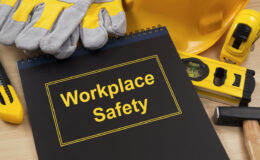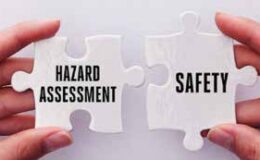By Travis Halsted, Loss Control Consultant
 Accident investigation and analysis is a means used to prevent accidents. As such, the investigation or analysis must produce information leading to corrective actions to prevent or reduce the number of accidents in the workplace. In 2014 the state of Michigan had 37 workplace fatalities. The investigations from these events are essential as they provide the possible root cause of the accident as well as assist in developing long term remedies. Injuries result in loss of productivity and efficiency, increased workloads on supervisors and co-workers, possible damaged equipment costs, economic hardship to the injured workers’ family, and a cost of the time spent on the accident investigation, return to work programs, and workers’ compensation claims management. By conducting accident investigations a company could possibly implement a remedy that could prevent future occurrences.
Accident investigation and analysis is a means used to prevent accidents. As such, the investigation or analysis must produce information leading to corrective actions to prevent or reduce the number of accidents in the workplace. In 2014 the state of Michigan had 37 workplace fatalities. The investigations from these events are essential as they provide the possible root cause of the accident as well as assist in developing long term remedies. Injuries result in loss of productivity and efficiency, increased workloads on supervisors and co-workers, possible damaged equipment costs, economic hardship to the injured workers’ family, and a cost of the time spent on the accident investigation, return to work programs, and workers’ compensation claims management. By conducting accident investigations a company could possibly implement a remedy that could prevent future occurrences.
Having conducted several accident investigations myself, I have found that completing an in depth and thorough interview with not only the employee, but any witnesses and the supervisor, can provide an opportunity for a great deal of vital information to be learned. Furthermore, I have found that completing the investigation as soon as possible is an essential piece of the puzzle, as the event is fresh in everyone’s mind. When an investigation is completed after a day or two, witnesses and even the employee’s recollection of the events could be clouded and possibly distort the actual events that took place.
Many individuals ask, what accidents/incidents should be investigated? The answer is simply that all accidents/ incidents should be investigated, regardless of severity of injury or amount of property damage. Every accident, even near misses, provides the opportunity to discover new ways to improve a safety program. As accident investigations often take some time of the investigator, the injured individual(s), and other members of the company, it is often thought of as a less than productive use of time. Listed below are some benefits to the employer and employee that justify the time of all individuals involved.
Benefits to the employer:
- Reduces the likelihood of fraudulent claims.
- Saves on hiring and training replacement employees.
- Facilitates employer/ employee contact, giving the employer more control and direction, leading to a more positive resolution.
Benefits to the employee:
- Increases self-esteem, minimizing feeling of guilt for having been injured.
- Promotes better morale among all workers.
- Reduces the negative financial impact many injured workers experience due to lost time.
Accident investigation training should provide the team members with information on how to:
- Survey the scene
- Get help for the injured
- Secure the scene
- Collect evidence as soon as possible
- Analyze data
- Determine surface and root causes
- Prepare an accident report with the details of accident
- Follow up
Items to examine during the investigation:
- Task(s)
- Material(s)
- Environment
- Personnel
- Management
It’s important to remember that the sole purpose of accident investigations is to determine and eliminate the cause of an accident, not to assign blame. Disciplinary actions should be handled separately from accident investigations. Through proper and thorough accident investigations the root cause, policies and controls, and continued training can be put in place. An essential part of being truly proactive in the future is being thoroughly reactive in current events. Contact your loss control consultant for information on the various tools that MTMIC can offer you for accident investigations.





